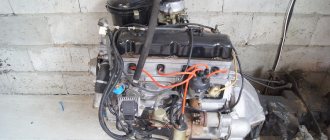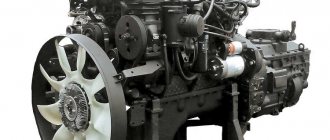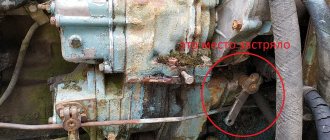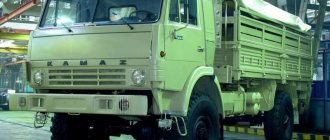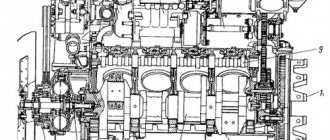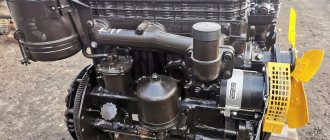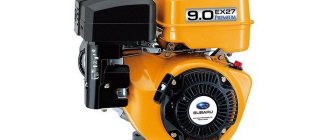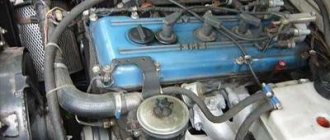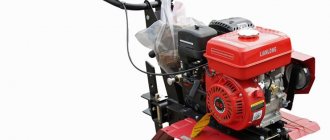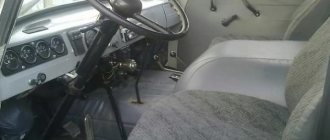ZIL 131 is a legendary truck, serial production of which was carried out by the Likhachev plant. This truck was the main one for the enterprise. ZIL 131 differed from all cars in that it has impressive cross-country ability in off-road conditions. A large amount of equipment was produced for the needs of the Soviet army.
The ZIL 131 truck was a truly successful development. Thanks to many different advantages, including high reliability and performance, the machine was very popular not only in the military sphere, but also in rural and national economies. The base of the truck later served to create many specialized modifications, which only expanded its scope.
One of the main qualities for which consumers chose this model was the low cost required for maintenance, as well as the simplicity of the design and mechanisms.
Despite the fact that the ZIL 131 began production back in the 1960s, it is currently also being used actively in various fields.
Story
In the 1950s, the Likhachev plant began designing all-wheel drive trucks, aimed primarily at fulfilling army needs. Together with the development of the ZIS 157, specialists tried to design a fundamentally new machine.
The truck received a lot of tested and proven solutions in its design on other models. But, despite this, the model also had its own shortcomings, quite a lot. In 1956, the developers presented an experimental version of the ZIS 131 truck, which was largely unified with the ZIS 130 truck.
That period of time became quite difficult for the enterprise. This was due to various difficulties in the manufacture of non-serial parts and assemblies, since in 1958 a transitional truck was introduced, called ZIL 165. In terms of technical characteristics and design solutions, the new model was very similar to the experimental version. But during testing, shortcomings were revealed, of which there were many. The plant considered it inappropriate to modify the ZIL 165, and the company seriously took up the further development of the 131st ZIL. This year, this truck has received a number of different improvements. In 1959, prototypes of the ZIL 131 showed excellent results in tests, and after that the model was supposed to go into mass production. But the plans changed a little due to some difficulties in the production itself.
In 1960, an experimental ZIL 132 truck rolled off the assembly line. Unlike the 131, it had even better cross-country ability. But he remained experimental and did not go into production.
In 1964, the plant began a global update of production programs. As a result of this, changes affected the appearance and internal content of the models. The ZIL 131 also came under modernization. From the very beginning, the plant planned to unify the new model with the ZIL 130, but such a decision was rejected by military representatives. This is explained by the fact that a truck that had an ornate radiator lining and inflated front fenders would not be efficient enough in field conditions.
The Likhachev plant presented the first production batch of new trucks in 1967. Over the next 8 years, engineers repeatedly refined the design of the machine, which as a result of all the changes made it possible to make the ZIL 131 a worthy replacement for the 157.
With regard to such qualities as comfort, maximum load capacity, cross-country ability and speed, the ZIL 131 had significant superiority over its predecessor model. In 1974, this truck was awarded the State Quality Mark.
The car was produced in its original form for about 20 years. In 1986, the truck was modernized. The new modernized version then received the name ZIL 131N. For consumers, the truck was available with both gasoline and diesel power units under the hood. In 1987, production of the model was expanded. Then the Ural Automobile Plant also began to carry out this process.
Production of the model ended in 1994. Then the Moscow enterprise was the first to shut down, since a replacement for the ZIL 4334 had been developed. But the Ural Automobile Plant still continued to produce new trucks from the assembly line. The ZIL 131 brand existed until 2002, and then the AMUR 521320 model, which is a full-fledged analogue of the ZIL 131N, went into production.
Meet ZIL-131
A large army truck, most often with a wooden flatbed body, covered with an awning, with a cab like a Ural and with four rear wheels. The production of these vehicles for the Soviet Army began in 1966 and continued until 1986. From 1986 to 1994, AMO ZIL produced a modernized version of the ZIL-131N, outwardly indistinguishable from its “brother,” running on diesel fuel. Then the model range was replaced by the ZIL-4334 with a modified cabin design. After 1994, the 131st Zilaka was produced at the Ural Automobile Plant until 2002. Then the production baton was taken over by the Novouralsk Automobiles and Motors of the Urals and produced a complete analogue of the truck under the AMUR-521320 brand. Moreover, chassis for various special equipment based on this machine are still produced to this day.
Although these trucks are no longer in mass production, they still make up the active fleet of military units. They can often be seen on Russian roads as part of military transport columns and military parades. By the way, ZIL-131 is not only a canopy board in which people and piece goods are transported. Based on this truck, many different special equipment were produced both for the army and for civilian needs. For example, fire trucks, mobile communication centers, Grad systems, tractor units for strategic missiles, timber trucks, aerial platforms, etc.
One of the significant characteristics of the ZIL-131 is increased cross-country ability. This requirement is justified, because an army truck has to travel not only on paved highways, but also on rough terrain, often damaged by rain and tracks. In accordance with its purpose, the ZIL-131 is equipped with an all-wheel drive transmission and a high ground clearance of 330 mm. Capable of fording a depth of more than a meter and overcoming steep climbs of up to 30 degrees. The carrying capacity of an army truck is not a record, but sufficient to perform the assigned tasks (see table).
Modifications
Over the entire period of serial production of the 131st model, many other versions were built on its basis, including:
Modification of ZIL 131A.
It is a special version with unshielded electrical equipment. The main difference between this modification and the base truck was the absence of special military equipment, an average bench in the body and a searchlight;
Modification ZIL 131V.
It is a truck-type tractor using the standard ZIL 131 as a base. This modification has a shortened frame. In addition, it has a fifth wheel coupling and two spare wheels. Such a truck transported various cargoes on a semi-trailer with a maximum load capacity of up to 12,000 kilograms (on hard road surfaces) and 10,000 kilograms (on dirt roads). The model rolled off the assembly line between 1968 and 1986;
Modification of ZIL 131D.
This modification is equipped with a dump-type body and special lifting equipment. In addition, under this name, from 1992 to 1994, another modification was produced in small batches, with a diesel power plant manufactured by Caterpillar under the hood;
Modification of ZIL 131S.
It is a special version intended for use in Siberia, the Far North and the Far East. It differs from the base truck in the presence of an autonomous heating system, additional thermal insulation, standard fog lights, thermal insulation of the battery and double windows. In addition, there are rubber products that have increased resistance to harsh temperature conditions;
Modification of ZIL 131AS.
The version is completely identical to the previous modification;
Modification of ZIL 131X.
It is a special version designed for use in areas with tropical and desert climates;
Modification of ZIL 131N.
It is a modernized version of the basic truck. The model has been produced since 1986. Among the main differences, the improved V-shaped eight-cylinder power plant of the ZIL-5081 brand should be highlighted. This engine has an operational life increased to 250 thousand kilometers. The version was also equipped with a new awning, in the manufacture of which more modern synthetic materials were used;
Modification of ZIL 131NA.
This modification is an analogue of the previous version. A distinctive feature was unshielded electrical equipment;
Modification of ZIL 131NV.
It is a truck-type tractor. Has a fifth wheel coupling and an improved platform;
Modification of ZIL 131N1.
It is a special version with a D-245.20 diesel power unit under the hood. The maximum output power of this engine reaches 105 horsepower;
Modification of ZIL 131N2.
It is a special version with a ZIL-0550 diesel power unit under the hood;
Modification of ZIL 131NS.
The modification is intended for operation in harsh temperature conditions. It is analogous to the ZIL 131S modification, but has an improved platform;
Modification of ZIL 131NAS.
The modification is intended for operation in harsh temperature conditions. It is analogous to the ZIL 131AS modification, but has an improved platform;
Modification of ZIL 131НВС.
It is also a northern version of the truck, like the two previous modifications;
Modification ZIL 131-137B.
The version is made in the form of a road train.
A fairly large part of the total production volume was occupied by versions that were a universal chassis. Various settings and special equipment were installed on such specimens. For example, a fire engine was built on the basis of the ZIL 131.
In addition to all this, the base of this truck served to create a wide variety of special equipment, among which it should be noted:
- Fuel tankers: ATZ-3.4-131, ATZ-4.4-131, ATZ-4-131;
- Oil tankers: MZ-131;
- Universal tank trucks: ATs-4.0-131, ATs-4.3-131;
- Airfield mobile units (tractors): APA-50M; APA-35-2V.
Results
It should be noted that the ZIL 131 engine is a legendary representative of an entire era of the automotive industry, but even today the ZIL 131 car and engine are actively used for military and civilian purposes. It should be noted that in civilian form, very often military vehicles that operate on the ZIL 131 engine are converted into special vehicles: fire engines, oil tankers, fuel trucks, airfield mobile units, universal tank trucks, and so on.
Often, car owners already know how to repair the engine, so the car is relatively profitable to maintain. The only serious drawback of the car, and therefore the ZIL-131 engine, is high fuel consumption (including diesel), which significantly impacts the owner’s pocket.
Cabin
The ZIL 131 truck was equipped with an all-metal, insulated cabin designed for three people.
The heating system in the cabin is combined with the engine cooling system and has a centrifugal fan. There is a special handle on the panel inside the cabin, through which the damper of the heating system channel is controlled.
The ventilation system is made as simple as possible. It is represented by roll-down windows, rotating door windows, as well as a channel near the right mudguard.
The cabin was equipped with separate seats. The driver's seat has several adjustments. The seats for passengers are combined and designed in the form of a small sofa. The seats have cushions made from sponge rubber.
ZIL-131 Fuel consumption Dimensions Load capacity Weight Tank volume
The three-axle ZIL-131 is the main model of the off-road truck of the Moscow Likhachev Plant from 1966 to 1994. This is one of the most famous and recognizable cars of the Soviet automobile industry throughout the world. “ZIL-131” is, first of all, a military vehicle, which for decades was supplied to the Soviet army and the armed forces of countries allied with the USSR.
Loading platform
The car body consists of a wooden platform with a metal frame and metal cross bars. The design is complemented by solid front and side sides. The rear platform was equipped with a folding side.
The standard ZIL 131 body is designed for wide use. In addition to transporting any cargo, the platform can also serve to transport people. To achieve this, the platform was equipped with folding benches, providing 16 seats, and an additional middle removable one, which can accommodate 8 people.
Device
ZIL-131 received a standard body in the form of a wooden platform with a folding tailgate. It featured folding benches with seating for 16, as well as an additional removable bench for 8 people. Arches for an awning were optionally installed on the body.
ZIL-131, unlike ZIL-157, received an electro-pneumatic drive to engage the front axle, which was started by a toggle switch located on the dashboard. When starting, the downshift lever, which is part of the transfer case, forcibly turned on the pneumatic drive of the front axle. The model uses a non-contact ignition system equipped with an electronic switch and a car generator with increased power. Additionally, there was an emergency generator, allowing movement for about 30 hours. The car used a single-plate sealed clutch with a damper and peripheral springs. The gearbox is 5-speed with synchronizers in 2-5 gears. Some modifications were additionally equipped with a ventilation system that allows fording. ZIL-131 received a 2-speed transfer case with a front axle clutch. Switching speeds was carried out with a special lever. The cardan transmission included 4 cardan shafts.
Thanks to the hydraulic booster, driving the ZIL-131 has become much easier. The truck is equipped with 8-stud disc wheels. The front dependent suspension of the truck is installed on 2 semi-elliptic springs equipped with shock absorbers and rear sliding ends. The rear suspension (balancer) is mounted on 2 semi-elliptical springs with sliding ends and 6 reaction bars.
The main braking system includes a single-circuit pneumatic drive without axial separation and drum mechanisms with a diameter of 420 mm. The spare and parking brake are installed on the transfer case.
The ignition system in the ZIL-131 is contactless transistor and shielded.
Some modifications of the car received a drum-type winch, complemented by a worm gearbox with a maximum traction force of 5000 kgf. The length of the winch was 65 m.
For a long time, the ZIL-131 remained one of the most popular Soviet trucks. The model was distinguished by maneuverability and ease of control. Moreover, even after the complete cessation of production, the model continued to be in demand. Despite their age, these cars are still used in various fields.
Specifications
Engine
ZIL 131 was equipped with a V-shaped eight-cylinder power unit of the ZIL-5081 brand with a carburetor fuel system.
Characteristics:
- Working volume – 5.97 l;
- Maximum power – 150 hp;
- Cylinder diameter – 100 mm;
- Piston stroke – 95 mm;
- The compression ratio in the combustion chamber is 6.5;
- Maximum torque – 410.2 Nm (at 1800-2000 rpm);
- Cooling – liquid;
- Average fuel consumption is 30-35 liters.
For diesel versions, a four-cylinder in-line engine of the D-245.20 brand was offered.
Characteristics:
- Working volume – 4.75 l;
- Maximum power – 122 hp;
- Cylinder diameter – 110 mm;
- Piston stroke – 125 mm;
- The compression ratio in the combustion chamber is 17.1;
- Maximum torque – 422 Nm (at 1800-2000 rpm);
- Cooling – liquid;
- Average fuel consumption is 18 liters.
Another option was the V-shaped six-cylinder diesel power plant of the YaMZ-236 brand.
Characteristics:
- Working volume – 11.15 l;
- Maximum power – 180 hp;
- Cylinder diameter – 130 mm;
- Piston stroke – 140 mm;
- The compression ratio in the combustion chamber is 17.5;
- Maximum torque – 1078 Nm (at 1100-1300 rpm);
- Cooling – liquid;
- Average fuel consumption is 30-40 liters.
checkpoint
The transmission of this truck is a five-speed manual gearbox. It contains a pair of inertial synchronizers, including second and third, fourth and fifth gears. The gearbox was also equipped with a single-plate dry clutch with a spring-loaded torsional vibration damper. The truck's transmission also has a two-speed manual transfer case.
The moment is transmitted to the wheels through four cardan shafts with hinges with needle bearings.
Brake system
ZIL 131 is equipped with drum brakes installed on all wheels. The mechanisms have two internal pads. This set of mechanisms represents the working system of the truck.
The parking brakes of the car are similar to the working system. There is also a drum mechanism here, but only one, installed on the transmission shaft. There are two shoes inside the drum.
Chassis
This model, like all other trucks, uses a stamped, riveted frame with channel side members and stamped cross members. A hook with a rubber shock absorber is installed at the rear of the frame. The frame is equipped with two rigid tow hooks at the front.
The front suspension consists of longitudinal springs and hydraulic, telescopic, bi-directional shock absorbers. The rear suspension also uses longitudinal springs. The rear suspension itself is balanced, and the front suspension is dependent.
Dimensions:
- Total length – 7040 mm.
- Full width – 2500 mm.
- Cabin height – 2480 mm.
- Wheelbase length – 3350 mm.
- The front track width is 1820 mm.
- The rear track width is 1820 mm.
- Ground clearance – 330 mm.
- The smallest turning radius is 10.2 m.
- The length of the loading platform is 3600 mm.
- The width of the cargo platform is 2322 mm.
- The height of the sides is 346 mm.
Description of design
The ZIL-131 all-terrain vehicle is capable of transporting cargo weighing up to 5,000 kg on paved roads and up to 3,500 kg on unpaved roads. To improve off-road performance, a centralized tire pressure control system and axles with the same track width are used.
The axle housings are located in one line, which reduces resistance when driving in deep snow.
The all-terrain vehicle is capable of overcoming water obstacles with a depth of up to 1.5 m.
The all-terrain vehicle is based on a frame made up of two spars and five cross members. To ensure structural strength, the spars have a variable cross-section along their length. The connection of the frame elements is made with rivets.
Engine
The serial army ZIL-131 all-terrain vehicles used an 8-cylinder 150-horsepower engine with a carburetor power system. The cylinders are located in two blocks installed at right angles. A special feature of the engine is an extended oil receiver and a different oil sump, allowing operation with longitudinal inclinations of up to 30⁰, and with transverse inclinations of up to 20⁰.
The engine has a volume of 5.996 liters and is equipped with heads for a compression ratio of 6.5. The joints of the engine parts are sealed with a special paste. On separate orders, vehicles were produced with an engine equipped with a block and piston group from the ZIL-375 engine.
The modernized ZIL-131N was equipped with a 150-horsepower engine with modified block heads that had screw-shaped gas distribution channels. The engine has become a little more economical and durable. In 1992, diesel engines from the Minsk Plant model D-245 (105...108 hp), as well as a 132-horsepower ZIL-0550 turbodiesel, began to be used. Cars with an imported 143-horsepower Perkins Phaser 145T diesel engine were built in small batches.
Hydraulics and steering
The hydraulic system on the ZIL-131 all-terrain vehicle is used only for steering. The steering gearbox is built according to the screw and nut scheme, similar to the ZIL-130 truck.
The hydraulic system was mounted on a ZIL-137 truck tractor and was used to drive the wheels of an active semi-trailer.
When moving, the engine drove a gear pump through a power take-off gearbox. Liquid under pressure up to 150 MPa was supplied to hydraulic motors installed on the axles of the semi-trailer. The liquid was then returned back to the supply tank.
Transmission
All-terrain vehicles ZIL-131 and 131N are equipped with a dry clutch with one working disc. A 5-speed synchronized (except for first gear) gearbox is attached to the clutch housing. To distribute torque along the axes, a 2-speed transfer gearbox is used. The gearbox and gear housings are sealed with sealing paste.
Two shafts go from the gearbox to the front and middle axles with a pass-through design. Torque is transmitted to the rear axle using a short shaft. The front axle is connected manually or automatically using an electro-pneumatic drive, which is activated when the low row in the transfer gearbox is engaged.
The main box is equipped with a 1-speed power take-off gearbox, which is used to drive the winch. The gearbox is switched on electro-pneumatically from the cab.
Electrical system
The ZIL-131 all-terrain vehicle is equipped with a direct current electrical system with an operating voltage of 12V. The negative terminal of the system is connected to the housing. The electrical system components are shielded to protect against interference and are also protected against water penetration.
Brake system
The truck uses a pneumatic brake drive system. Drum-type mechanisms are located on all wheels. The parking brake is installed at the output of the transfer gearbox. The brake chambers were equipped with a drainage system to drain water that accumulated in the housings when overcoming water obstacles.
Add-on options
The ZIL-131 onboard all-terrain vehicle was equipped with a wooden platform. There was a metal frame around the perimeter. The supporting cross bars of the body are also made of metal. Only the tailgate folds down, the rest have an increased height. On the side sides there are folding benches designed for 16 people.
In the center of the platform there is space for installing a third bench for 8 people. The truck was equipped with an awning, which is stored in a separate container behind the rear wall of the cabin.
A large number of ZIL-131 army all-terrain vehicles were equipped with a closed KUNG-type van.
Radio communication and surveillance systems, repair equipment, etc. could be located inside. The vans are equipped with a ventilation and air heating system with an autonomous heater. The air intakes of the ventilation system are equipped with filters.
Peculiarities
Advantages
The ZIL 131 truck has a fairly large number of positive reviews. In them, many drivers and owners noted its extreme reliability, impressive endurance and practically indestructible quality of all components and mechanisms. In addition, the truck was also famous for its cross-country ability, which at the time of mass production had practically no equal. Unless the competition could come from the brainchild of the Gorky Automobile Plant GAZ 66.
Having a fully loaded body, the truck could overcome wet and broken road sections without any problems. Clay slopes, sand dunes, and rough terrain blurred by heavy rains also did not become a problem for him. As you might guess, with such an excellent set of qualities, the ZIL 131 was a particularly popular vehicle in the army and national economies, where work was carried out in places difficult to reach for other vehicles.
In terms of design, the truck turned out to be as simple and understandable as possible. Much of what it has is almost completely similar to the 130th ZIL. The only difference was the cabin, the middle axle and all-wheel drive, which was not included in the plans for the predecessor.
Simple maintenance is also noted. The large hood and high ground clearance provide full access to all components and assemblies. Due to this, any malfunction could be resolved in a fairly short time, even in the field, if, of course, a certain set of tools was present.
Flaws
But besides its advantages, the ZIL 131 also has several disadvantages. First of all, it should be noted that a truck is not suitable for long-term travel. This is explained by the fact that the landing in it is quite rigid, although it provides excellent visibility. At speeds over 65 kilometers per hour, the truck shakes noticeably, and due to poor sound insulation, it becomes very noisy inside. Another drawback, which is currently very significant for the truck, is its fuel consumption.
The car consumes really large amounts of fuel. If earlier, when the truck was produced, fuel cost a penny, and besides, the cars were not private, but state-owned, but now it’s the other way around. If a truck is now privately owned, it is often converted to gas equipment.
Price
The ZIL 131, like the GAZ 66, was primarily focused on fulfilling various army needs, but in addition to this, the equipment was actively used in national economies. Due to the military purpose of this truck, a large number of vehicles were sent for conservation, from where you can currently purchase samples with excellent technical and external condition, low mileage and various equipment on board, such as KUNGs and the like.
Fans of hunting and fishing, as well as travelers, are often interested in this option. As for the price, depending on the year of manufacture, a ZIL 131 truck straight from storage can have an average cost ranging from 500 thousand to 700 thousand rubles. But there are also more expensive versions, equipped with economical diesel power units, now available at a cost of up to one million rubles. It is also worth noting that the type of installed equipment also affects the price.
Cheaper options include the same machines supplied to the national economy. In this case, used equipment has an average cost ranging from 100 thousand to 300 thousand rubles. Here the price is influenced by factors such as the year of manufacture, technical condition, mileage, and the equipment of the truck.
If we consider equipment that is not running or in a technical condition close to this, then the price tag varies from 60 thousand to 90 thousand rubles.
Service
Maintenance of the motor is quite simple, so even a non-specialist can handle this process. Approximately every 15 thousand kilometers it is necessary to inspect and service the engine. When performing maintenance on the machine, you need to replace the engine oil, as well as the centrifugal oil filter.
Each maintenance is a set of special operations and procedures that are necessary in order to maintain the proper technical condition of the machine. To service the ZIL 131 engine, you will need to perform the following operations and procedures:
- Change of oil;
- valve mechanism adjustment;
- replacement of the filtration system. It is worth noting that, depending on the modification of the engine, some filter elements may be missing, in particular this applies to the fine and coarse oil filter, fuel cleaning system and air filter;
- other power unit maintenance procedures.
Malfunctions, breakdowns and repairs
If any problems or breakdowns are discovered during maintenance, repairs will be required.
Almost nothing lasts forever, the same applies to the ZIL 131 engine. The engine can fail, so in-line repairs are very common. However, often in-line repairs may not be effective for certain faults, so it is necessary to resort to special methods for correcting them.
The most common breakdowns you can encounter are:
- If the engine refuses to start, or starts very poorly, although the starter is working normally, then the problem is that there is no fuel in the carburetor float chamber. To fix the problem, you need to purge the fuel lines, recheck the function of the carburetor needle valve and the fuel pump system.
- Sometimes the ZIL 131 engine may operate with certain interruptions or quickly stop at idle. In this case, most likely the cause of the malfunction is that the carburetor float chamber is slowly filling with fuel liquid. To eliminate the malfunction, you need to wash the needle valve, bleed the lines and wash the fuel coarse filter.
- If the ZIL 131 engine suddenly stops and refuses to work, you will have to contact a service center for a thorough diagnosis and establish the reason for the stoppage, because the problem is internal.
- If the engine cannot fully develop its power, then it is necessary to adjust the clearances in the valve system.
- If knocking and crackling noises are heard in the engine, then most likely there is a large gap between the valves and rocker arms. In this case, you need to properly adjust the distance in the valve system.
- If during operation of the machine there is too much excessive consumption of fuel fluid, then the problem may be an increased level of fuel in the carburetor chamber. It is necessary to remove the leakage of the needle valve or set the needle position correctly.
Of course, the problems presented and the ways to solve them are superficial and the most common. Other malfunctions may also occur with the same symptoms, which require a completely different approach to repairing the ZIL 131 engine. It is for this reason that if you do not know for sure what the malfunction is, you should not try to carry out repairs yourself. This is especially true when we are talking about an amateur motorist and not a specialist.
Reviews from owners and drivers
- I have a ZIL 131 - an updated 130 with a medium axle. The car impresses with cross-country ability and copes with the assigned tasks. My car is used as a timber carrier, as well as technical assistance. This is an army heavy truck with military camouflage. Honor and praise to those car enthusiasts who convert these cars into mobile bathhouses, although this is purely business. The car is more power hungry than the 130th model. This modification has an extended side platform and so-called “conics”. ZIL 131 copes well with the duties of a log carrier with an average load capacity of 5 tons. In addition, this model has proven itself well as a timber truck. Of course, the cost of owning such a car costs a tidy sum, but this, of course, is not compared with foreign analogues). The machine has a high degree of survivability and maintainability. The interior has a “Spartan” seating position, so you can immediately see that this is a pure workhorse. The 6.0 liter engine produces 150 hp. With. and consumes at least 30 liters at 60 km/h.
- An excellent rogue as the main source of income. When I was very young in the era of the USSR, my father’s ZIL-131 seemed quite huge to me, but in theory it is a medium-tonnage truck, and in the 131 version it also has increased cross-country ability. The 6.0 liter engine regularly produces 150 horses and is prone to overheating. In winter, it pleases with a confident start. The presence of three bridges is impressive in terms of cross-country ability - the car confidently moves through swampy areas. The tread of the tires is, to put it mildly, not shabby. And yet, there are also force majeure situations: once we got stuck in a deep river - we drove there specifically to wash the truck. But alas, we didn’t notice - the car was sucked into this abyss much deeper. Fortunately, we had a winch then. Otherwise, this heavy ZIL would hardly have left without outside help. The fuel consumption of this middle-class “tractor” is 35-40 liters, depending on the load. The carburetor is powerful enough for such a weight of car.
- I am the owner of a ZIL-131 truck, which has a set of disadvantages and advantages, like any other truck for comparable money. Yes, it has a gigantic consumption of 40 liters. And this car is also poorly suited for long-distance travel. But the driving performance of the 131 is excellent. It's nice to meet this "old guy" in the village, in the city, at a construction site, in a quarry, etc. I use it for off-road driving, as a towing vehicle, etc. The ZIL 131 must be admitted as a worthy investment if you need a stable source of income. Of course, you need your own auto repair shop, since third-party maintenance of the ZIL will cost serious money. ZIL has a durable engine that can work in hot or cold weather. The transmission shifts predictably and doesn't overheat. As far as I remember, a similar combination (ICE + manual transmission) from ZIL was installed on the famous Lviv LAZ bus. The engine consumes a lot of gasoline and oil, which can be considered its main disadvantage.
- I work on a ZIL 131 manufactured in 1984. I must admit, this car is a legend of the Soviet automobile industry, because thanks to such cars it was possible to rebuild an entire large country. Like a great power, ZIL also has many disadvantages, but there are many more advantages! In terms of dynamics, the car pulls well even uphill or on a country road, as well as in muddy ground. But you need to understand that the higher the load, the greater the fuel consumption. I fit in 40-45 liters depending on the load. But how ZIL overcomes mud barriers cannot even be described in poetry. You can drive in reverse uphill - however, to do this you need to lower the tire pressure to 0.5. It is noteworthy that on the highway you can squeeze out as much as 70 km/h from this hard worker. The car drives easily, given the large traction reserve. Perhaps the only thing better than this car is the GAZ-66.
- I have a Soviet-made ZIL 131. Equipped with a 6-liter gasoline engine and manual transmission. It’s a pity, such a car is very difficult to find in diesel version - with this engine ZIL is much more economical. But the 6-liter gasoline engine impresses with its acceleration dynamics. The car is capable of confidently crossing a deep ford, unless the Urals passes in front of it - you yourself understand how deep the ruts are from its wheels. It is precisely for such cases that the modification with a winch came in handy. I would like to note the convenient operation of the transmission and transfer case. The brakes are pneumatic. We were pleased with the very strong axles - in fact, this is a real cargo-class SUV. However, the consumption of 40-45 liters does not correspond to current standards. Unfortunately, a diesel option could not be found.
- Once I was lucky enough to drive this truck - to earn extra money on vacation, so to speak. I have the 131st ZIL with a D-245 engine running on heavy fuel. This unit is perfect for a truck and heavy vehicle with fancy off-road capabilities. Reliability, reliability and maintainability are the main advantages of this vehicle with timely maintenance. The diesel engine has a large reserve of thrust at low speeds. obstacles can be overcome without acceleration. The truck doesn’t care about hills, ditches, foxes or swamps. The car is equipped with a centralized tire inflation system, which allows you to deflate the tires at the right time and thereby turn the ZIL into a kind of tracked vehicle. This feature, as well as the 6x6 wheel formula, easily compensate for the lack of inter-wheel locks. If necessary, the front axle can be disabled. There is a power take-off drive, as well as an 80-meter winch. With such an off-road arsenal, of course, it would be a sin to hope for good driving performance in urban conditions. The car rolls heavily and is almost uncontrollable. The steering wheel is very heavy, the truck is clumsy. The roar of the engine in the cabin makes the voice of the passenger almost inaudible. There is yaw, and already at medium speed. However, the braking system is worth praising – by class standards, of course. It must be admitted that nothing can replace the ZIL 131 where the road ends and Russian land begins.
- This truck is worth the money spent. I have a version with a 6.0 liter engine, which is considered the most controversial for this model. Okay, there it shows itself quite well on the 130th model, but the 131st ZIL with such an internal combustion engine consumes even more fuel and oil. Of course, this is due to the 6x6 wheel arrangement and more toothy tires - almost like the Ural. At least these “slippers” are installed on my modification. Fortunately, the car is so repairable that it is not a problem to even replace the engine - there are heaps of them in stock. I had a case where I was sent on a flight, there were a couple of kilometers left to the final point, but suddenly the engine suddenly stalled. I thought the carburetor had failed - it wouldn’t pick up speed and generally wouldn’t start. After being driven to the base, the engine was opened and shavings were found, as well as a flying corkscrew ring. The main journal and engine were ground down for replacement, fortunately we have several of them. But this time they installed a diesel engine - it is much more economical.
Truck ZIL-131: characteristics, description, photos, videos..
Photo: Grad-1 MLRS based on ZIL-131. Selection-8 Photo: Grad-1 MLRS based on ZIL-131. Selection-7 Photo: ARS-14 based on ZIL-131. Selection-6 Photo: TRM-90 on the ZIL-131 chassis. Selection-5 Photo: ZIL-131. Selection-3 Photo: BM-13NMM / 2B7R / “Katyusha” on the ZIL-131 chassis. Selection-4 Photo: APA-50M based on ZIL-131. Selection-2 Photo: ZIL-131. Selection-1
ZIL-131 is a Soviet all-terrain truck produced from 1966 to 2002. The truck was produced at the Moscow Likhachev ZiL Plant. The truck was supposed to replace the ZIL-157 truck. The truck is designed for transporting cargo and towing trailers/implements on highways and dirt roads, as well as off-road. It has a cargo compartment adapted for transporting people in a wooden body with folding benches along the sides. The main operator of the truck was the army and industrial enterprises of the Soviet Union. It was exported to friendly countries of the Soviet Union.
History of creation
The history of truck production began in 1956, when ZIL designers presented to party officials a prototype ZIL-131 , created on the basis of the ZIL-132. In parallel with the ZIL-131, the ZIL-130 truck was developed. The truck has successfully passed tests at automobile testing grounds and various climatic tests. The truck was scheduled to go into mass production in 1961, but various bureaucratic problems delayed production by five years. During the delay, the truck continued to improve, as evidenced by the first modernization of the vehicle after 20 years of production. During design, the closest competitor of the ZIL-131 was the ZIL-132 with a 6x6 wheel arrangement and having equidistant axles with wider wheels. The tactical and technical characteristics of the ZIL-132 were higher than those of the ZIL-131 , but the ZIL-131 was cheaper and easier to produce. Although the ZIL-131 was supposed to replace the ZIL-157 (produced 1958-1994), they were destined to be produced together in the same workshops of the Moscow ZIL plant for 25 years. Production of the ZIL-131N continued until 1994 at the Moscow ZIL plant (according to some sources until 1990); production of the truck ceased with the start of production of the ZIL-4334. Production of the truck continued in Novouralsk at the AMUR automobile plant until 2010; in 2003, production of the AMUR-531350 truck began, the truck was a copy of the ZIL-131 , but with a diesel engine. Production of the ZIL-131 was completely completed at the AMUR plant in 2011 after its bankruptcy. The truck chassis became the platform for the creation of many vans and special equipment for military and civilian needs. In 1974 the car was awarded the State Quality Mark.
ZIL-131 cargo chassis you can find truck cranes, military KUNGs (command, radio stations, mobile workshops, etc.), vehicles for servicing airfields and aircraft, fire engines, military trucks for transporting personnel, MLRS "Grad-1" and "Katyusha", etc. ZIL-131 KUNGs were equipped with an FVUA-100N-12 filter-ventilation unit, capable of purifying the air from radioactive dust and gaseous toxic substances, while creating excess pressure that does not allow air from the street to penetrate into the body through the cracks. During production, 998,429 ZIL-131 and its modifications were produced. From 1987 to 2007, 52,349 ZIL-131N . The maximum volume of truck production occurred in the 1980s; every year the plant produced almost 50,000 ZIL-131 per year. A staff of 120,000 employees worked on the production of trucks at the plant. During the Afghan War, ZIL-131 began to be handicraft armed with ZU-23-2 anti-aircraft guns or “Cornflower” automatic mortars; this method of homemade modernization continued to be used during two Chechen campaigns and during the military conflict in the East of Ukraine.
Design
1 - drive flange of the steering knuckle axle 2 - tire valve 3 - front wheel brake drum 4 - front wheel with variable pressure pneumatic tire 5 - longitudinal leaf spring 6 - clutch pedal 7 - longitudinal steering rod 8 - steering mechanism 9 - front buffer 10 - drum-type winch with worm gear 11 — tubular engine lubrication oil cooler 12 — power steering oil cooler 13 — power steering pump reservoir 14 — engine cooling radiator 15 — oil filler neck with crankcase ventilation filter 16 — compressor for the pneumatic brake drive system and central pumping tires 17 — air filter 18 — engine 19 — foot brake pedal 20 — steering wheel 21 — gear lever 22 — transfer case shift lever 23 — carburetor throttle pedal 24 — winch lever 25 — handbrake lever 26 — air tank for compressed air 27 - transmission housing ventilation tube 28 - air release tube from the air distribution valve 29 - air supply tube to the fuel tanks 30 - rear cabin mounting bracket 31 - electromagnetic air distribution valve for automatically turning on the front drive axle 32 - fuel tank 33 - cardan drive shaft of the middle drive axle 34 - exhaust noise muffler 35 - muffler pipe 36 - drive shaft of the rear axle 37 - upper torque rod of the rear axle suspension 38 - lower torque rod of the suspension 39 - rear wheel 40 - socket for a portable lamp 41 - rear frame buffer
ZIL-131 is a frame truck with a 6x6 wheel arrangement. All performance characteristics were initially created for military needs, which implies a fairly powerful engine and a strong frame, the ability to tow guns and overcome water obstacles for fording. The vehicle weight is 6135 kg, the load capacity is 5 tons on the highway and 3.5 tons on dirt roads. The machine is suitable for use in all conditions, including tropical ones, at any time of the year at temperatures from -40 to +55 degrees Celsius. The car is equipped with a 5-speed gearbox with the ability to select a reduction gear (1st gear is used when there is a heavy load or going uphill), the front-wheel drive can be switched off using the gearbox or by an electro-pneumatic drive using a toggle switch from the car's cab. The cabin of the car is an all-metal body that accommodates the driver and two passengers on a separate double sofa, under which there is a small trunk. The first cabins for the ZIL-131 were used from the ZIL-130, but were replaced at the request of the military. And vice versa The cabin is thermally insulated; a stove is used to heat the interior, using the engine cooling system. The two-piece panoramic windshield provides good visibility for the driver and passengers. Mechanical door windows and vents serve to ventilate the car. The machine is equipped with a T-100 pre-heater, which preheats the engine for starting within 2 minutes at minus 30 degrees. An oil filter is used for filtration. Since the machine must overcome fords, all electrical equipment is sealed, like many other units. The gas exhaust system and mufflers are made of cast iron metals to increase the service life when the system ends up in water while overcoming a water obstacle.
The vehicle has excellent characteristics for off-road driving due to 6x6 all-wheel drive with the ability to adjust ground pressure using centralized tire inflation from the vehicle’s cabin while driving. Centralized tire inflation increases the survivability of the vehicle during a puncture/shot wheel, by inflating the damaged wheel until the vehicle reaches a safe place or a repair shop. Many vehicles were equipped with a mechanical winch (cable length 50 meters) with power take-off from the gearbox, which made the winch not “killable” when completely immersed in mud and water. Axles mounted on semi-elliptical springs with reaction bars. Drum brakes, pneumatic. As a rule, the ZIL-131 was equipped with a carburetor 8-cylinder V-shaped engine with a volume of 6.28 liters. The engine power is 150 hp, and “devours” A-76 gasoline from two tanks of 170 liters each. Fuel consumption on the highway is 35 liters per 100 km and 60-70 liters when driving over rough terrain. Fuel consumption at maximum off-road load reaches 100 liters per 100 km. Cruising range 600-630 km. The engine provides a maximum speed of 85 km/h, cruising speed of 50-60 km/h.
Main modifications:
- ZIL-131A - the car has a simplified assembly by replacing sealed-shielded electrical appliances with simple devices. They began to be produced in January 1971. The appearance of this model is due to the fact that the car ceased to be purely military and was unified for civilian purposes.
- ZIL-131N - a modernized version of the truck has been produced since 1986. The modernized version of the ZIL-131 began to be produced with diesel engines ZIL-131N1 (D-245.20-105 hp) and ZIL-131N2 (ZIL-0550, 132 hp), the new carburetor engine was distinguished by a higher compression ratio and capabilities use A-76 and AI-93 gasoline as fuel. The service life of the ZIL-5081 engine has been increased to 250,00 km
- ZIL-131V - a seat tractor had a coupling device for transporting trailers. The tractor unit served as the basis for the creation of the ZIL-137 road train with a 10x10 wheel arrangement
- ZIL-131NS - northern version, designed to work in Extreme Server conditions at temperatures down to -60
- ZIL-131D dump truck, did not gain distribution, production was curtailed
- ZIL-131X - a truck version adapted for use in tropical and desert climates
- ZIL-131-137B road train with a 10x10 wheel arrangement. The chassis was often used to create airfield fire engines and missile launchers
Conclusion
The truck rightfully went down in Soviet history. ZIL-131 trucks will continue to drive on the roads of the countries of the former USSR and friendly countries for a long time. Even after several decades, former drivers speak with respect of the car for its quality, reliability and ease of maintenance. Even in frosts of -30...-50, drivers manage to start it without problems by first pouring gasoline into the carburetor and warming up the crankcase with a blowtorch. Excellent cross-country ability is ensured by 6x6 all-wheel drive with the ability to adjust tire pressure. The car has a “Spartan” set of comfort for drivers consisting of manual windows and a stove capable of heating the interior of the car to a “bathhouse” state. The car is not designed for long trips due to its gluttony and cruising speed of 50-60 km/h. The truck's habitat is forest roads and fields. The 131st ZIL will serve in the fire department and perform combat missions in the army for a long time.
If you are interested in articles about auto-moto topics, you can visit our Mustang website.
Characteristics of ZIL-131
| Wheel formula | 6x6 |
| Suspension type | spring |
| Engine | ZIL-131, carburetor, 8-cylinder, V-shaped |
| Engine capacity | 6 liters |
| Power | 150 hp |
| Fuel | AI-72 and AI-76 |
| Volume of the tank | 2x170 |
| checkpoint | five-speed |
| Dimensions | Length 7040 mm, height 2480 (without awning) and 2970 mm with awning, width 2500 mm |
| Track | 1820 mm |
| Clearance | 330 mm |
| Base weight | 6135 kg without winch and 6235 with winch |
| Curb weight | 10185 kg |
| Load capacity | 5000 kg on the highway and 3500 on rough terrain |
| Towed trailer weight | 6500 kg on the highway and 4000 on rough terrain |
| Crew | 1 driver+2 passengers |
| Speed | maximum 85 km/h, cruising 50-60 km/h |
| Power reserve | 600-630 km on highway |
| Fuel consumption | 35 liters per 100 km on the highway, 60-70 over rough terrain |
| Obstacle to be overcome | rise - 30 degrees, 1400 ford |
| Armor | No |
| Armament | No |
